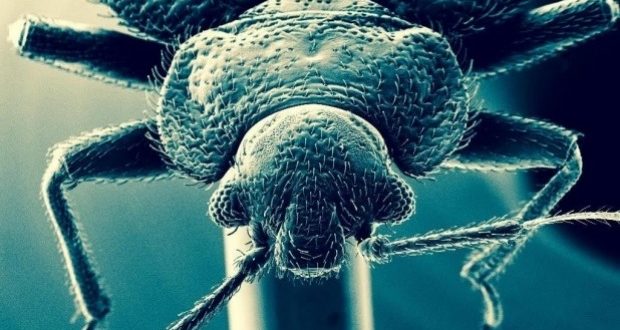Bed bugs – the blood-sucking bane of backpackers everywhere – are notoriously difficult to stamp out once they take hold. Not only can they survive a year without feeding, but they’re also rapidly developing resistance to insecticides.
David Lilly at the University of Sydney has found that the outer shells, or cuticles, of these bugs are getting thicker. And bed bugs with thicker shells are highly resistant to the insecticides used to control them.
In a study published April 13 in the journal PLOS ONE, Lilly and colleagues found that the thickness of a bedbug’s exoskeleton, or cuticle, corresponded to how long they were able to survive in the presence of an insecticide sold under the brand name Demand CS. This is a pyrethroid insecticide, a class of chemicals to which bedbugs have become increasingly resistant in the last few decades, Lilly says.
In the study, the scientists exposed the bedbugs to the insecticide, and then noted how long it took for them to keel over. Those who made it 24 hours had significantly thicker exoskeletons than those that tapped out at two or four hours.
A thicker cuticle reduces the amount of insecticide that’s absorbed into the bug’s body and slows down the intake across the membrane, Lilly says. That gives the insect more time to produce enzymes that break down or modify the chemical. “There’s a synergistic response between cuticle thickening and others detoxification mechanisms,” he adds.
Besides cuticle thickening, bedbugs have also evolved other tricks to stay a step ahead of insecticide. Pyrethroid insecticides target the sodium channels within the insect nervous system, where they bind and wreak havoc with the animal’s nerve communication, which ultimately leads to their death. But the insects have begun to evolve mutations in the proteins that control these channels, termed kdr mutations, which prevent the chemical from binding and interfering. The insects have also evolved the ability to produce a variety of enzymes that can detoxify insecticides.
Lilly says that the finding highlights the importance of smart pest management, particularly the use of nonchemical methods such as heat and extreme cold.
Agencies/Canadajournal
 Canada Journal – News of the World Articles and videos to bring you the biggest Canadian news stories from across the country every day
Canada Journal – News of the World Articles and videos to bring you the biggest Canadian news stories from across the country every day




I think you’re just supposed to super heat the rooms and that kills them. You would need to get someone with the machine, but at least you’re not poisoning your rooms frequently.
Electrical trap.
Infrared light and produce a little C02 to immitate a sleeping, breathing human.
Zap them dead. No evolving resistance to that.